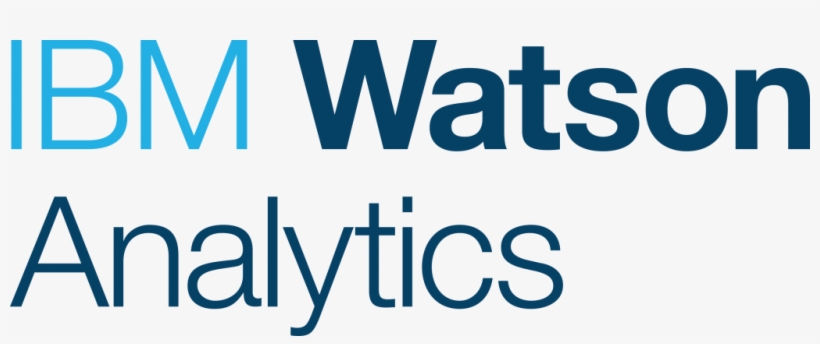
IBM Watson Customer Experience Analytics: Complete Buyer's Guide
Enterprise-grade AI platform for emotional intent analysis and predictive customer behavior modeling
IBM Watson Customer Experience Analytics represents IBM's enterprise-focused approach to AI-powered customer insights, though the platform faces significant availability questions that require immediate buyer attention. The primary product URL redirects to IBM's generic products page, suggesting potential discontinuation or substantial rebranding that creates uncertainty around current market availability.
Market Position & Maturity
Market Standing
IBM maintains a strong position in enterprise AI markets, with Watson technologies deployed across multiple industries. However, the specific customer experience analytics segment presents competitive challenges from specialized vendors like CallMiner (Forrester leader in conversational intelligence)[20] and integrated platforms like Salesforce Einstein, which demonstrates proven 30% conversion improvements[37] with accessible customer evidence.
Company Maturity
IBM's enterprise-grade infrastructure and decades of business technology experience provide reasonable assurance of operational stability and ongoing support capabilities. The company's extensive compliance frameworks and security certifications align with enterprise requirements for regulated industries, though specific product roadmap commitments for Watson Customer Experience Analytics require direct verification.
Industry Recognition
While IBM Watson technologies receive industry recognition across multiple AI categories, specific analyst positioning for Watson Customer Experience Analytics lacks accessible verification. This contrasts with competitors like Adobe Sensei and Salesforce Einstein, which maintain clear analyst recognition and market positioning documentation.
Strategic Partnerships
IBM's extensive partner network and system integrator relationships provide implementation support capabilities that smaller vendors cannot match. However, the effectiveness of these partnerships for Watson Customer Experience Analytics specifically requires confirmation given current product status questions.
Longevity Assessment
IBM's enterprise focus and technology investment provide reasonable confidence in long-term platform support, though the specific future of Watson Customer Experience Analytics requires clarification. Organizations planning multi-year implementations should verify product roadmap commitments and ongoing development investment before proceeding with vendor selection.
AI Technology
IBM Watson Customer Experience Analytics was architected around advanced emotional intent analysis capabilities that differentiate it from traditional sentiment analysis approaches. The platform's AI technology core focuses on understanding not just customer sentiment polarity but the underlying emotional drivers and motivations behind customer behaviors across multiple touchpoints.
Architecture
IBM positions the platform with hybrid deployment flexibility, supporting both on-premise and cloud configurations to meet enterprise data residency requirements. This architectural approach addresses regulatory compliance needs in industries like healthcare and financial services where data governance mandates may restrict cloud-only solutions. The platform reportedly handles large data volumes with minimal latency, supporting real-time decision-making for marketing campaigns and customer service interventions.
Primary Competitors
Salesforce Einstein, Adobe Sensei, CallMiner
Competitive Advantages
The platform's claimed differentiation centers on emotional intent analysis capabilities beyond traditional sentiment tracking, hybrid deployment flexibility for data residency requirements, and enterprise-grade compliance features for regulated industries. Integration potential with broader IBM technology ecosystems provides additional value for organizations with existing IBM infrastructure investments.
Market Positioning
IBM Watson Customer Experience Analytics targets enterprise organizations requiring sophisticated compliance frameworks and hybrid deployment models, competing primarily on advanced emotional analysis capabilities rather than ease of implementation or transparent pricing. This positioning creates competitive advantages in regulated industries but limitations for organizations prioritizing rapid deployment and immediate value realization.
Win/Loss Scenarios
Choose IBM Watson Customer Experience Analytics when emotional intent analysis provides specific business value, hybrid deployment requirements mandate on-premise options, existing IBM infrastructure creates integration advantages, and enterprise compliance requirements exceed market alternatives. Consider alternatives when product availability requires immediate confirmation, implementation timeline constraints favor faster deployment options, budget limitations require transparent pricing models, or proven customer evidence drives vendor selection criteria.
Key Features

Pros & Cons
Use Cases
Featured In Articles
Comprehensive analysis of AI Customer Insights for AI Marketing & Advertising for AI Marketing & Advertising professionals. Expert evaluation of features, pricing, and implementation.
How We Researched This Guide
About This Guide: This comprehensive analysis is based on extensive competitive intelligence and real-world implementation data from leading AI vendors. StayModern updates this guide quarterly to reflect market developments and vendor performance changes.
121+ verified sources per analysis including official documentation, customer reviews, analyst reports, and industry publications.
- • Vendor documentation & whitepapers
- • Customer testimonials & case studies
- • Third-party analyst assessments
- • Industry benchmarking reports
Standardized assessment framework across 8 key dimensions for objective comparison.
- • Technology capabilities & architecture
- • Market position & customer evidence
- • Implementation experience & support
- • Pricing value & competitive position
Research is refreshed every 90 days to capture market changes and new vendor capabilities.
- • New product releases & features
- • Market positioning changes
- • Customer feedback integration
- • Competitive landscape shifts
Every claim is source-linked with direct citations to original materials for verification.
- • Clickable citation links
- • Original source attribution
- • Date stamps for currency
- • Quality score validation
Analysis follows systematic research protocols with consistent evaluation frameworks.
- • Standardized assessment criteria
- • Multi-source verification process
- • Consistent evaluation methodology
- • Quality assurance protocols
Buyer-focused analysis with transparent methodology and factual accuracy commitment.
- • Objective comparative analysis
- • Transparent research methodology
- • Factual accuracy commitment
- • Continuous quality improvement
Quality Commitment: If you find any inaccuracies in our analysis on this page, please contact us at research@staymodern.ai. We're committed to maintaining the highest standards of research integrity and will investigate and correct any issues promptly.